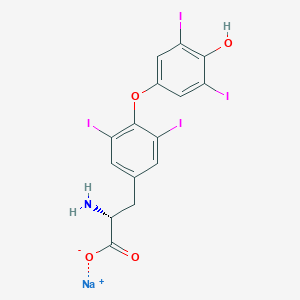New progress has been made in the evolution of ancient elevation and plant diversity in southeastern Tibet
-
Last Update: 2021-03-15
-
Source: Internet
-
Author: User
Search more information of high quality chemicals, good prices and reliable suppliers, visit
www.echemi.com
reconstruction of the southeastern edge of the Qinghai-Tibet Plateau plays an important role in studying the uplinding process of the whole plateau and the history of species formation and evolution in the region. Previous studies of the ancient elevation of the southeastern edge of the Qinghai-Tibet Plateau were mainly based on the comparison of biological formations, and it was concluded that the ascension of this area occurred in the Recent Times, and many molecular systems studies have inferred that the species differentiation on the southeastern edge of the Qinghai-Tibet Plateau occurred mainly in the New Era. Su Tao Researcher, Zhou Zhekun Researcher and colleagues at the Xishuanghuangdana Tropical Botanical Garden of the Chinese Academy of Sciences and their domestic and foreign counterparts found well-preserved plant fossils and volcanic ash rocks in the new generation formations of the Mankang Basin in the National Science Review
. Plant fossils are produced in 4 layers, of which MK3 and MK1 fossils are best preserved, and there are more species and quantities. Volcanic ashstones have also been found in the adjacent layers of the two fossils. In this paper, important results are obtained in three aspects:
1) the volcanic ashstones in the formation were measured by the argon-argon method, and the results showed that the geological age represented by the MK3 layer in the lower part was 34.6 ± 0.8 Ma (million years), while the MK1 layer at the upper part represented 33.4 ± 0.5 Ma. This period of Earth's history coincided with the Eocene-Oligocene Transition, with a time limit of 33.9 Ma.
2) Overall, the fossil flora in this formation is very similar to the modern plant groups at different altitudes on the southeastern edge of the Qinghai-Tibet Plateau. Among them, the main group of fossils produced by the MK3 layer is the evergreen group of Quercus subg. Cyclobalanopsis and the deciduous group Betulaceae represent evergreen and deciduous forests, while the MK1 group includes the small leafy Salix, Rosa, and Quercus sect. Heterobalanus, etc., represents the alpine dwarf shrub type.
3) Through the climate-leaf multivariable analysis program, the ancient temperature on the southeastern edge of the Qinghai-Tibet Plateau has undergone a certain process of decrease. The ancient elevation represented by the MK3 and MK1 layers was reconstructed using the principle of wet static energy, in which the ancient elevation of the MK3 layer was 2910 ±910 meters, while the ancient elevation of the MK1 layer was 3850 ±910 meters, indicating that the ancient elevation of the area rose by about 900 meters during the 19th-Gradient transition period and was close to or reached the modern altitude of 3900 m.
this study is of great significance in three main aspects:
1) proves that the ancient elevation of the southeastern edge of the Qinghai-Tibet Plateau (including the transverse mountains) was already higher at the beginning of the late Neo-Society, and that the early Neo-New World may have approached or reached the current elevation;
2) The global cooling at the turn of the Pleistology-Emerging World and the continued rise of the southeastern edge of the Qinghai-Tibet Plateau have transformed the vegetation in the area from evergreen deciduous broad-leaved mixed forests to alpine deciduous thickets, and significantly smaller leaves are also an important feature of this change
(Source: Science Network)
related paper information:
This article is an English version of an article which is originally in the Chinese language on echemi.com and is provided for information purposes only.
This website makes no representation or warranty of any kind, either expressed or implied, as to the accuracy, completeness ownership or reliability of
the article or any translations thereof. If you have any concerns or complaints relating to the article, please send an email, providing a detailed
description of the concern or complaint, to
service@echemi.com. A staff member will contact you within 5 working days. Once verified, infringing content
will be removed immediately.







